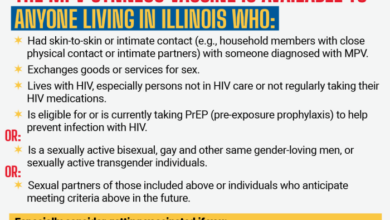
Pharmaceutical Corporations and AIDS: A Complex History
Pharmaceutical corporations and AIDS have a long and complex history, one marked by both progress and controversy. From the initial denial of the epidemic’s severity to the development of life-saving antiretroviral therapies, the role of these corporations has been pivotal in shaping the global response to HIV/AIDS.
This blog delves into the intricate relationship between pharmaceutical corporations and the AIDS epidemic, exploring the ethical considerations, research advancements, and the fight for equitable access to treatment.
The story begins with the early days of the AIDS epidemic, when pharmaceutical companies were slow to recognize the urgency of the crisis. As the epidemic gained momentum, however, so did the demand for effective treatments. This spurred a wave of research and development, ultimately leading to the creation of groundbreaking antiretroviral therapies that transformed the lives of millions.
However, the development of these treatments also brought about new challenges, including the high cost of medication and the complex issue of intellectual property rights.
Historical Context of Pharmaceutical Involvement in AIDS
The pharmaceutical industry’s response to the AIDS epidemic has been a complex and multifaceted one, marked by both progress and controversy. The initial years were characterized by a slow and inadequate response, but over time, significant advancements in treatment and prevention have been made.
This journey has been shaped by various factors, including scientific breakthroughs, political pressures, and the tireless advocacy of affected communities.
Initial Response and Early Challenges
The early years of the AIDS epidemic were marked by a sense of urgency and confusion. While the virus was rapidly spreading, pharmaceutical companies were slow to respond. This initial delay was due to several factors, including:* Lack of Understanding:The scientific community was still grappling with understanding the nature of HIV and its transmission.
The impact of pharmaceutical corporations on the AIDS epidemic is a complex and multifaceted issue. While some argue that these corporations have played a vital role in developing life-saving treatments, others criticize their pricing practices and lack of access for those in need.
The development of effective antiretroviral drugs has undoubtedly improved the lives of millions, but the high cost of these medications remains a major barrier to treatment. Furthermore, the role of trade agreements, such as some regional free trade agreements , in shaping access to essential medicines needs to be carefully considered.
Ultimately, ensuring equitable access to affordable AIDS treatment requires a multifaceted approach that addresses both the pharmaceutical industry’s role and the broader political and economic context.
This lack of knowledge made it difficult to develop effective treatments.
Financial Disincentives
The AIDS epidemic primarily affected marginalized communities, which presented a limited market for pharmaceutical companies. This made it less financially attractive to invest in research and development.
Stigma and Discrimination
The stigma surrounding AIDS led to a reluctance among some pharmaceutical companies to invest in research and development.
Timeline of Significant Milestones, Pharmaceutical corporations and aids
The development of AIDS treatments has been a long and arduous process, marked by several significant milestones:
- 1981:The first cases of AIDS are reported in the United States.
- 1983:The human immunodeficiency virus (HIV) is identified as the cause of AIDS.
- 1985:AZT (zidovudine) becomes the first FDA-approved drug for the treatment of AIDS.
- 1987:The first protease inhibitors are developed, marking a significant breakthrough in AIDS treatment.
- 1996:The introduction of highly active antiretroviral therapy (HAART) significantly improves the lives of people living with AIDS.
- 2003:The first preventive HIV vaccine trial begins.
- 2011:The first long-acting injectable HIV treatment is approved.
- 2015:The World Health Organization (WHO) recommends that all people living with HIV receive lifelong antiretroviral therapy.
The Role of Activism and Advocacy
Activism and advocacy played a crucial role in influencing pharmaceutical research and development for AIDS. Groups like ACT UP (AIDS Coalition to Unleash Power) and the Treatment Action Campaign (TAC) used direct action and public pressure to demand faster development of treatments and access to affordable medications.
Their efforts helped to:* Increase Public Awareness:Activist groups raised awareness about the AIDS epidemic and its impact on communities.
Challenge Pharmaceutical Companies
They held pharmaceutical companies accountable for their slow response and high drug prices.
The high cost of AIDS medications, often produced by pharmaceutical corporations, can create a huge financial burden for individuals and families. This burden can be exacerbated by the fact that many people living with HIV/AIDS are already struggling with poverty and lack of access to basic healthcare.
It’s a stark reminder of how debt, as explored in this article on debt and the effect on children , can ripple through generations, impacting even the most vulnerable. These financial constraints often force individuals to make difficult choices, ultimately affecting their ability to access life-saving treatments and improve their quality of life.
Promote Research and Development
Activist groups advocated for increased funding for AIDS research and development.
“We are not asking for a cure. We are demanding a life.”
ACT UP
The high cost of AIDS medications has long been a point of contention, with pharmaceutical corporations often accused of profiting off the suffering of millions. This issue, however, raises a broader question about the ethical implications of global aid, which can sometimes mirror the practices of dumping surplus goods.
A recent article on food aid as dumping highlights how the distribution of food aid can be detrimental to local farmers and economies. Similarly, the overreliance on expensive pharmaceutical solutions for AIDS might inadvertently undermine local healthcare systems and perpetuate a cycle of dependency.
The activism of these groups helped to create a more favorable environment for pharmaceutical companies to invest in AIDS research and development. It also led to greater access to treatment for people living with HIV.
Research and Development of AIDS Medications
Developing effective antiretroviral therapies (ARTs) to combat HIV/AIDS has been a monumental undertaking, marked by both remarkable scientific breakthroughs and persistent challenges. The journey to develop these life-saving medications has been complex, requiring extensive research, clinical trials, and a deep understanding of the virus’s intricate mechanisms.
Challenges in Developing Antiretroviral Therapies
The development of effective antiretroviral therapies has been a long and arduous process, characterized by significant hurdles.
- Understanding the Virus:HIV is a highly complex and adaptable virus that can rapidly mutate, making it challenging to develop drugs that can effectively target it.
- Targeting Multiple Stages of the Viral Life Cycle:HIV’s life cycle involves several intricate steps, from entry into the host cell to replication and release of new viral particles. Antiretroviral drugs must target these different stages to effectively suppress the virus.
- Drug Resistance:HIV’s ability to mutate rapidly can lead to drug resistance, requiring scientists to develop new drugs or combinations of drugs to overcome this challenge.
- Side Effects:Many antiretroviral drugs can cause significant side effects, including nausea, fatigue, and liver damage. Finding a balance between efficacy and tolerability is crucial.
- Long-Term Treatment:HIV infection is a chronic condition requiring lifelong treatment. This poses challenges for drug development, as long-term safety and efficacy must be considered.
Groundbreaking Research and Scientists
Despite these challenges, groundbreaking research has led to the development of effective antiretroviral therapies.
- The Discovery of Reverse Transcriptase Inhibitors:Howard Temin and David Baltimore independently discovered the enzyme reverse transcriptase in 1970, which is essential for HIV to replicate. This discovery paved the way for the development of reverse transcriptase inhibitors (RTIs), which block the enzyme’s activity. RTIs like AZT (zidovudine) were among the first antiretroviral drugs approved for HIV treatment.
- The Development of Protease Inhibitors:In the early 1990s, scientists developed protease inhibitors (PIs), which block the activity of HIV protease, an enzyme essential for the virus to mature and become infectious. The combination of RTIs and PIs marked a significant turning point in HIV treatment, leading to a dramatic decrease in HIV-related mortality and morbidity.
- The Introduction of Integrase Inhibitors:Integrase inhibitors (INIs) were introduced in the late 2000s. These drugs target the integrase enzyme, which is responsible for inserting HIV’s genetic material into the host cell’s DNA. INIs have proven to be highly effective in suppressing viral replication.
Impact of Intellectual Property Rights on Access to Treatment
Intellectual property rights (IPRs) play a crucial role in incentivizing pharmaceutical companies to invest in research and development. However, they can also create barriers to access to essential medicines, particularly in low- and middle-income countries.
- High Drug Prices:Patent protection allows pharmaceutical companies to set high prices for their drugs, making them unaffordable for many people in developing countries. This price disparity highlights the tension between protecting intellectual property and ensuring access to essential medicines.
- Limited Generic Competition:Patent protection restricts the production and sale of generic versions of drugs until the patent expires. This limits competition and keeps prices high. Generic versions of antiretroviral drugs are often much cheaper than brand-name versions, but they may not be available in all countries.
- Compulsory Licensing:Some countries have resorted to compulsory licensing, which allows them to produce or import generic versions of patented drugs without the patent holder’s permission. This can be a controversial measure, but it can provide access to essential medicines at lower prices.
Access to Treatment and Pricing Strategies: Pharmaceutical Corporations And Aids
The development of effective antiretroviral therapies (ARTs) has been a remarkable achievement in the fight against HIV/AIDS. However, the high cost of these medications has been a major barrier to access, particularly in low- and middle-income countries. This section examines the pricing strategies employed by pharmaceutical corporations for AIDS medications and the factors influencing access to treatment in different parts of the world.
Pricing Strategies for AIDS Medications
Pharmaceutical companies have employed various pricing strategies for AIDS medications, aiming to balance profitability with access. Some common strategies include:
- Tiered Pricing:This strategy involves setting different prices for medications based on the income level of the country or region. Lower prices are offered to low-income countries, while higher prices are charged in developed nations. This approach aims to increase access in resource-limited settings while still generating revenue from wealthier markets.
- Patent Protection:Pharmaceutical companies use patents to protect their intellectual property and prevent generic competition. This allows them to maintain high prices for extended periods, which can limit access, especially in countries with limited resources.
- Volume Discounts:Some companies offer volume discounts to governments or organizations purchasing large quantities of medications. This strategy can lower the overall cost of treatment, but it may not be accessible to all individuals or communities.
- Co-payment Schemes:Pharmaceutical companies may collaborate with governments or NGOs to establish co-payment schemes, where patients contribute a portion of the cost of treatment. This can help to make medications more affordable, but it can also exclude individuals who cannot afford even a small co-payment.
Factors Influencing Access to Treatment
Several factors influence access to treatment for HIV/AIDS, including:
- Cost of Medications:The high cost of ARTs remains a significant barrier to access, particularly in low- and middle-income countries. The affordability of medications is a major determinant of whether individuals can access treatment.
- Availability of Treatment:Access to treatment is also influenced by the availability of medications and healthcare services. In some countries, there may be limited access to healthcare facilities, qualified healthcare providers, or adequate infrastructure to support treatment.
- Government Policies:Government policies play a crucial role in determining access to treatment. Some governments provide comprehensive HIV/AIDS programs that include free or subsidized medications, while others may have limited or no support for treatment.
- Stigma and Discrimination:Stigma and discrimination associated with HIV/AIDS can prevent individuals from seeking testing, treatment, and support services. Fear of social exclusion, judgment, or discrimination can deter individuals from accessing care.
Approaches of Different Pharmaceutical Companies
Pharmaceutical companies have adopted varying approaches to affordability and access to AIDS medications. Some companies have been criticized for prioritizing profits over access, while others have implemented more equitable pricing strategies.
- Generic Competition:The entry of generic manufacturers into the market has significantly reduced the cost of ARTs. Some pharmaceutical companies have actively promoted generic competition, while others have sought to maintain their market share by delaying generic entry.
- Philanthropic Initiatives:Some companies have established philanthropic initiatives to provide medications to low-income countries. These initiatives can help to increase access, but they may not be sustainable in the long term.
- Access to Medicines Programs:Several pharmaceutical companies have partnered with governments and NGOs to develop access to medicines programs. These programs aim to improve affordability and access to medications by providing subsidies, grants, or other forms of financial support.
Ethical Considerations in Pharmaceutical Development and Distribution
The development and distribution of medications for AIDS, while a significant achievement in public health, raise complex ethical considerations that must be carefully addressed. These considerations are crucial for ensuring that research is conducted ethically, that medications are accessible to those who need them, and that the interests of both patients and pharmaceutical companies are balanced.
Ethical Considerations in Clinical Trials
Clinical trials are essential for evaluating the safety and efficacy of new medications. However, ethical concerns arise when considering the use of placebo groups in AIDS research. While placebo groups are necessary to establish the effectiveness of a treatment, there are concerns about exposing individuals with a life-threatening disease to the risk of not receiving potentially life-saving medication.
- Informed Consent:Informed consent is paramount in clinical trials. Participants must be fully informed of the risks and benefits of participating, including the possibility of receiving a placebo. The information should be presented in a clear and understandable manner, ensuring that participants comprehend the implications of their decision.
This is especially critical for individuals with limited literacy or who are facing significant health challenges.
- Minimizing Risk:Ethical considerations require minimizing risks to participants in clinical trials. When using placebo groups, it’s crucial to ensure that the control group receives the best available standard of care. This might involve providing access to existing treatments or offering alternative interventions that could mitigate the risks associated with not receiving the experimental drug.
- Monitoring and Data Safety:Close monitoring of participants in clinical trials is essential to ensure their safety and well-being. Data safety monitoring boards are established to review trial data regularly, ensuring that the risks to participants are minimized and that the trial is conducted ethically.
Role of Pharmaceutical Companies in Patient Education and Responsible Drug Use
Pharmaceutical companies play a crucial role in promoting responsible drug use and patient education. This involves providing accurate information about their medications, including potential side effects, interactions with other drugs, and proper dosage.
- Patient Information Leaflets:Pharmaceutical companies are required to provide patient information leaflets that accompany their medications. These leaflets should be written in clear and concise language, providing essential information about the drug, its intended use, potential side effects, and dosage instructions.
- Direct-to-Consumer Advertising:Direct-to-consumer advertising can raise ethical concerns if it promotes medications without providing balanced information about potential risks and side effects. Pharmaceutical companies should ensure that their advertising campaigns are truthful, accurate, and responsible, providing consumers with a comprehensive understanding of the medication’s benefits and risks.
- Patient Support Programs:Pharmaceutical companies can offer patient support programs to provide assistance with medication adherence, managing side effects, and accessing resources. These programs can be valuable in ensuring that patients receive the support they need to use their medications effectively.
Conflicts of Interest between Pharmaceutical Corporations and Public Health Organizations
Conflicts of interest can arise when pharmaceutical corporations interact with public health organizations. These conflicts can influence decision-making, potentially jeopardizing the public health interests.
- Funding and Research Collaboration:Pharmaceutical companies often provide funding for research and public health initiatives. While this funding can be beneficial, it can also create a conflict of interest if it influences research outcomes or policy decisions. Transparency and accountability are crucial to ensure that research is conducted independently and that public health decisions are not unduly influenced by industry funding.
- Lobbying and Advocacy:Pharmaceutical companies engage in lobbying efforts to influence government policies and regulations. This can create conflicts of interest if the companies’ interests are not aligned with the best interests of public health. Public health organizations should maintain their independence and advocate for policies that prioritize public health, even if they may conflict with industry interests.
- Access to Treatment and Pricing Strategies:Pharmaceutical companies have a vested interest in maximizing profits. This can lead to conflicts of interest when it comes to pricing strategies and access to treatment. While pharmaceutical companies need to recoup their research and development costs, they should also consider the affordability of their medications and the needs of patients, particularly in developing countries.
The Future of Pharmaceutical Research and Development for AIDS

The fight against HIV/AIDS continues, and pharmaceutical research plays a crucial role in developing innovative solutions. While significant progress has been made, new challenges and opportunities emerge constantly, shaping the future of AIDS research and development.
Emerging Trends in Research and Development
The landscape of HIV/AIDS research is constantly evolving, with new trends emerging to address the challenges of the disease.
- Focus on Long-Acting Therapies:Research is focusing on developing long-acting therapies, such as injectable or implantable medications, to improve adherence and reduce the frequency of medication administration. This approach aims to simplify treatment regimens and improve patient outcomes.
- Personalized Medicine:Personalized medicine is gaining traction in HIV/AIDS treatment.
This involves tailoring treatment strategies based on an individual’s genetic makeup, viral characteristics, and other factors. This approach aims to optimize treatment effectiveness and minimize the risk of drug resistance.
- Combination Therapies:Combining different types of antiretroviral drugs has been a cornerstone of HIV/AIDS treatment.
Researchers are exploring new combinations of drugs with improved efficacy, safety, and tolerability profiles.
- Broadly Neutralizing Antibodies (bNAbs):bNAbs are a promising new class of HIV treatments that target specific areas of the virus, preventing it from infecting healthy cells. Research is ongoing to develop bNAbs that are effective against a wide range of HIV strains.
- Gene Editing:Gene editing technologies, such as CRISPR-Cas9, are being investigated for their potential to cure HIV/AIDS. These technologies could theoretically modify the genetic makeup of infected cells to prevent the virus from replicating.
Potential for New Treatments and Preventive Measures
The advancements in research and development have paved the way for potential new treatments and preventive measures against HIV/AIDS.
- New Antiretroviral Drugs:The development of new antiretroviral drugs with improved efficacy, safety, and tolerability profiles is a continuous area of research. These drugs could offer better treatment options for individuals with HIV/AIDS.
- HIV Vaccines:Developing a safe and effective HIV vaccine remains a significant challenge.
However, ongoing research explores various vaccine strategies, including DNA vaccines, protein vaccines, and adenovirus-based vaccines.
- Pre-Exposure Prophylaxis (PrEP):PrEP is a highly effective way to prevent HIV infection. Research is focusing on developing more user-friendly and long-acting PrEP options to enhance accessibility and adherence.
- Microbicides:Microbicides are topical products that can be applied to the vagina or rectum to prevent HIV transmission. Research is exploring various microbicide formulations, including gels, films, and rings.






